Number Sense Routines Book Study: Chapter 3
Chapter Three: Visual Routines- Seeing and Conceptualizing Quantities
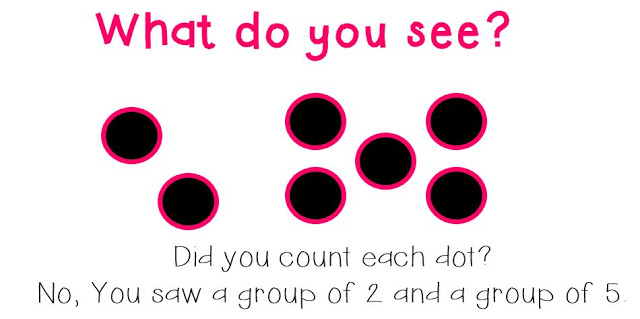
This is an example of how as adults we are able to visualize what is before us. A difficult concept for a student without a solid foundation in number sense.
This chapter is filled with visual number sense routines!
Subitizing is the ability to instantly recognize how many there are in a given set without having to count the set. Subitizing is used for building spatial relationships and increasing number sense. The chapter mentions two forms of subitizing; conceptual and perceptual.
Perceptual Subitizing: Is a form of subitizing that hildren possess at a young age. Children are able to recognize amounts {usually those less than 5} at an early age, even before they know how to count.
Conceptual Subitizing: Is a form of subitizing that comes later for children. Conceptual subitizing means children are able to combine small groups to see the total. This is what we were able to do when looking at the two groups of dots at the top of the post.

The chapter explains quick images are pictures of quantities, usually organized in such a way as to encourage students to use, enhance, and build on their subitizing abilities.
The book also went on to state that quick images set up opportunities for your students t practice thinking more efficiently and automatically about quantities advancing their mental math abilities.
The chapter using quick images with dot cards and ten frames!

How to start quick images in your classroom?
The book explains using simple dot cards as a way to introduce the routine in your classroom. Explain to the students that you will be showing them a dot card. However, you will further explain that they will only have a few seconds to identify the number. The book also explained to have students show a silent thumbs up as a way to announce that they knew the correct answer. 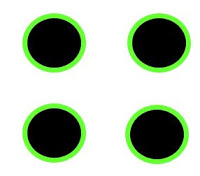
Example of beginning dot card used.
Then, call on your students. Ask them for their answer, BUT ask them to tell you how they got their answer. This way you can see if the student is simply counting or starting to see groups of objects– such as a group of 2 and 2 or a group of 1 and 3.
The book then discussed an important comparison between counting and reading. Would one find it efficient to sound out every sound in a word? No, just as it is not efficient to count every single image within a group- – especially if we already know how many are in the group.
To further build perceptual subitizing move on to a more difficult dot card.

Example of next step dot card.
By using the more difficult dot card you will begin to see students making connections to the groups. Again, you will emphasize that your students build upon seeing groups rather than counting each dot.
The dot cards can be represented using the same color shading, different shadings, and in a scattered arrangement.
I have compiled an easy to implement Subitizing: With Dot Cards packet. Simply print out the dot cards, laminate, and place on a metal ring/leave loose.
This packet also comes with a whiteboard version. You can easily project the whiteboard version on your Smartboard and display the dot cards.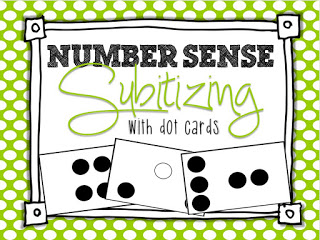
Click above to view the packet. The packet sells for $3. However, it will be marked down to a $1.50 this week only!
The book discussed ten frames by stating the structure of the frame always shows a quantity’s relationship to ten and allows students to see the “shape” of numbers.Below is a quick video of quick images using ten frames from The Teaching Channel.
Ten frame flash/quick images is a routine I implemented in my classroom! This kids did very well with it. I started the routine just like in the video, using a magnetic board. This past spring I did get two new sets of interactive ten frames. These will be easy to use and mobile so that I can use them in the hallway and on the go! They are listed below. Click the image to view the link!
Above is a snapshot of my ten frame flash cards. I simply printed them and laminated them. I placed one set on a metal ring and left the other set loose.
Below is a picture of two students playing Ten Frame Flash!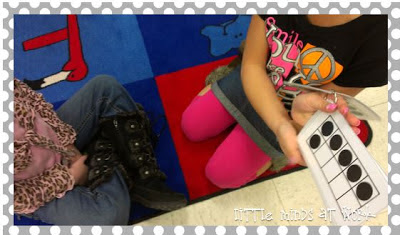
I also found a great ten frame flash online game for my students to play!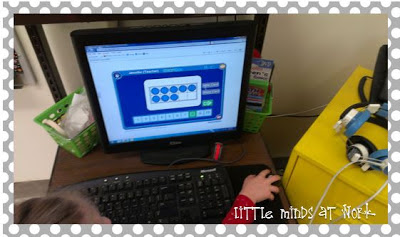
Click HERE to view the online freebie games!I have compiled an easy to implement
Subitizing: With Ten Frames packet. Simply print out the ten frame cards, laminate, and place on a metal ring/leave loose.
This packet also comes with a whiteboard version. You can easily project the whiteboard version on your Smartboard and display the ten frame cards cards.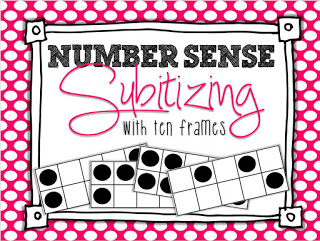
Click above to view the packet!
The last section of this chapter discussed rekenreks! The book states that like the ten frame, the purpose of the rekenrek is to support students’ discovery of number relationships through a clear visual model.
Below is a picture of my home-made rekenreks. They are easy and cheap to make!
Step by Step Instructions:
Step by step instructions:
– At Lowes, Menards, etc go to the vertical blinds section.
Purchase a package of replacement blinds. Mine were $10.
-Purchase elastic from the sewing section. Also, purchase plastic beads- It’s best to stick with 2 solid colors.
-String the elastic through the holes adding the beads, tie off in the back.
I also made these easy to use practice sheets to go along with the rekenreks!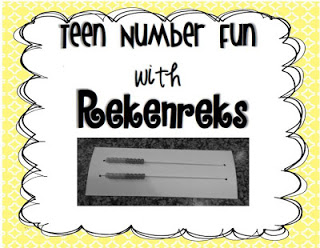
They are a FREEBIE. Click below to download!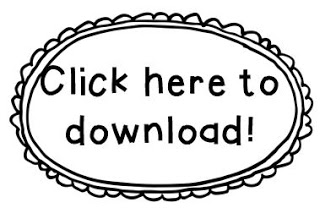
Okay, I am sure I missed an important detail, but whoooo this was long post! I will continue to share with you about these routines as I start them in my own classroom this upcoming school year.
Up next? Chapter 4: Counting Routines

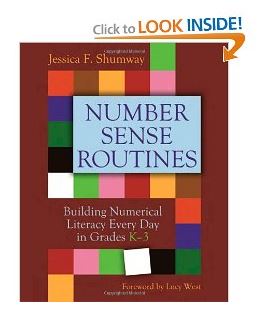
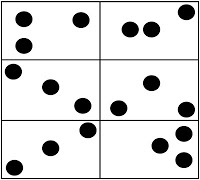
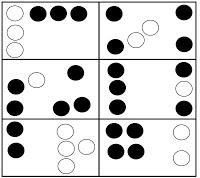

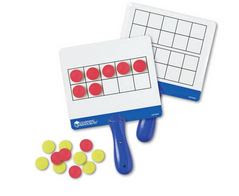
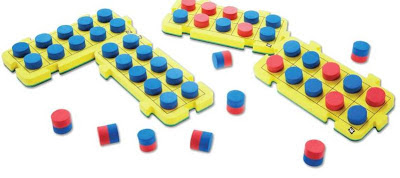

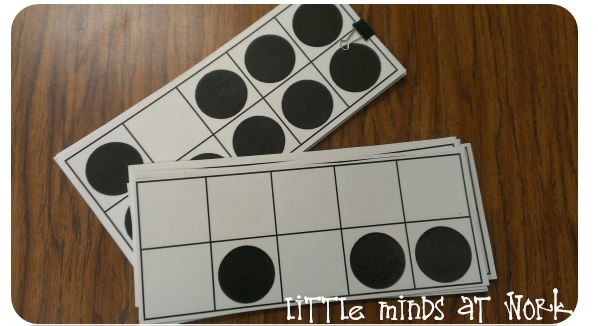

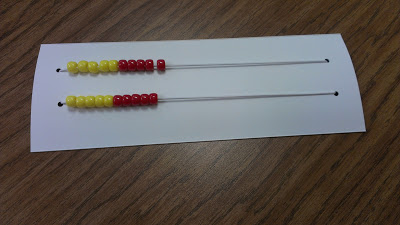
Quick Images was one of our routines with Investigations. It was really great to see what they could do! They were already built in on the Smartboard lessons so it was easy peasy.
Amber
Sparkles, Smiles, and Successful Students
I'd like to purchase a teacher rekenrek does anyone know of a good source?
I am enjoying this book study and your post are awesome. I was also wondering the best place to get a teacher rekenrek and also any ideas to get the magnets featured in the video in the post? The large bold colors seem really effective. Holly Rose
I love all of this! We started rekenreks today. I need to get this book! I love subitizing also. Thank you 🙂
all the technical KINGDOM777 solutions and staff we need for 에볼루션 카지노 operators who provide world